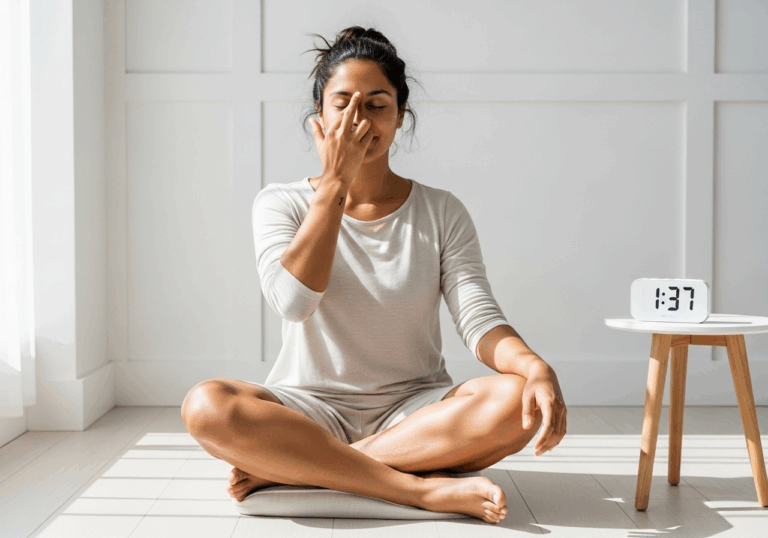Science-Backed Tips
Boost Your Mood with Box Breathing
Increase heart rate variability by 40% in just 5 minutes.
📊 Did you know?
💡 Why It Matters
1️⃣
Improved HRV is linked to better emotional regulation, enhancing overall mood.
2️⃣
Lower cortisol levels can lead to reduced stress and anxiety, improving quality of life.
3️⃣
Regular practice of box breathing can be a cost-effective strategy for managing stress.
✅ Try These Micro-Tips
🎯
Practice box breathing (4-4-4-4) for 5 minutes daily.
🎯
Incorporate this technique during stressful situations to enhance resilience.
🎯
Use guided breathing apps for structured sessions.
🎯
Combine box breathing with mindfulness meditation for added benefits.
📚 The study
Recent research highlights that engaging in this controlled breathing method can significantly enhance heart rate variability (HRV) by up to 40% while simultaneously reducing cortisol levels by around 20%.
These changes are not just numbers; they translate into real-world benefits such as improved emotional regulation and a more stable mood.
By practicing box breathing regularly, individuals can cultivate a greater sense of calm and resilience against stress.
The significance of these findings cannot be overstated, as enhanced HRV is closely linked to better emotional health, allowing individuals to navigate life’s challenges with greater ease.
Furthermore, lower cortisol levels contribute to reduced anxiety and stress, ultimately leading to an improved quality of life.
This makes box breathing a cost-effective and accessible strategy for anyone looking to manage stress and enhance their overall well-being.
Whether you’re a busy professional, a student facing academic pressures, or simply someone seeking tranquility in a hectic world, incorporating box breathing into your daily routine can be a transformative practice.
Embrace the power of your breath and discover how this simple technique can reset your nervous system, paving the way for a more balanced and joyful life.
❓ Frequently Asked Questions ❓
Learn more
What is box breathing?
Box breathing is a controlled breathing technique that involves inhaling, holding, exhaling, and holding the breath for equal counts, typically four seconds each. It is designed to promote relaxation and improve physiological stress resilience.
How does box breathing affect heart rate variability (HRV)?
Practicing box breathing can increase HRV by as much as ~40%. This improvement in HRV is associated with better emotional regulation and mood enhancement.
What are the emotional benefits of box breathing?
Box breathing can lower cortisol levels by approximately 20%, which helps reduce stress and anxiety. This reduction in stress hormones supports improved emotional regulation and overall mood.
How long should I practice box breathing for optimal results?
It is recommended to practice box breathing for 5 minutes daily to achieve optimal results. Regular practice can significantly enhance your stress resilience and emotional well-being.
Can box breathing be used in stressful situations?
Yes, box breathing can be effectively incorporated during stressful situations to enhance resilience. It helps calm the mind and body, allowing for better stress management.
Are there any tools to help with box breathing practice?
Guided breathing apps can provide structured sessions for practicing box breathing. These tools can help you maintain focus and consistency in your practice.
Can box breathing be combined with other techniques?
Combining box breathing with mindfulness meditation can yield additional benefits. This combination enhances relaxation and promotes a deeper state of emotional regulation.
Is box breathing a cost-effective stress management strategy?
Yes, box breathing is a cost-effective strategy for managing stress as it requires no special equipment or expenses. It can be practiced anywhere, making it accessible to everyone.
What physiological changes occur with regular box breathing practice?
Regular practice of box breathing leads to increased HRV and decreased cortisol levels. These physiological changes contribute to improved emotional regulation and overall quality of life.
How does improved HRV relate to mood?
Improved HRV is linked to better emotional regulation, which enhances overall mood. By practicing box breathing, individuals can experience a positive shift in their emotional state.





